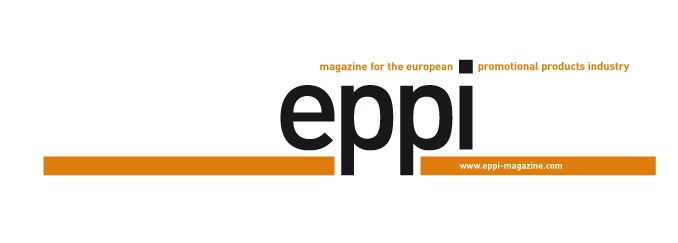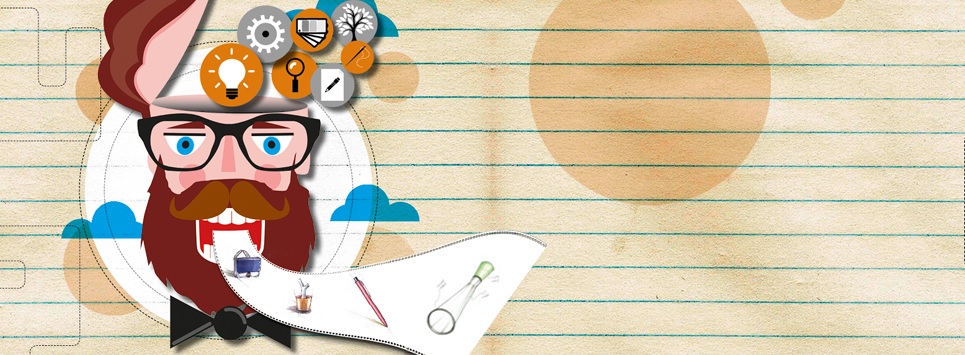Unique products create a competitive edge and are the antithesis of disposable items. With this in mind, many promotional products players rely on product design – and are giving the golden rule “form follows function” a completely new meaning.
The French/American designer Raymond Loewy, who is regarded to be the inventor of streamlined design, once said, “Ugliness does not sell”. Anyone, who claims this principle doesn’t apply for promotional products, must have spent a long time living on the moon. Year after year, countless promotional products manufacturers are among the winners of relevant design prizes and the “Hall of Fine Designs” at the Hong Kong Gifts & Premium Fair is just one of many indications that the producers in the Far East have long since started attaching importance to design quality.
“In terms of quality, promotional products, which were in the past often referred to in a derogative manner, have undergone further development. A type of emancipation process has taken place and is indeed still ongoing. In addition to loud and garish items, one increasingly finds products that credibly convey complex messages in a brand and value-oriented manner. I don’t believe the brand image of companies like Audi, BMW or Nike can be promoted using cheap import products. The ultimate aim is for the product to have a positive effect on the customer and in turn lead to brand loyalty. This can only be achieved using products that are made by companies that actually reflect this brand quality themselves,” said product and graphic designer, Christoph Schnug, owner of Studio C in Milan and Berlin, who has been working for Prodir for many years. The Swiss writing instrument producer is a prime example of a company that has positioned itself on the promotional products market using design as the key factor. Prodir relies on a distinctive design language, which is based on the programmatic principle “Less is more”. The design concept with its striking, yet discrete shapes, its simplicity and minimalism pervades through the entire brand identity. “Good design doesn’t ‘chat’ – it tells a story. Good design doesn’t ‘flash’ – it is self-confident, inviting and functional, while at the same time being as simple and comprehensible as possible. These are prerequisites for a successful product,” said Schnug. “Prodir’s products are without frills, yet nevertheless unmistakable. It is precisely this simplicity combined with a high customisability that is the key to success.“
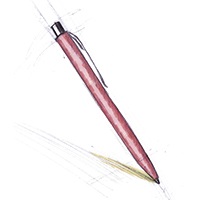 Furthermore, it is essential to offer distinctive products if one wants to survive on the market and avoid price wars. This applies for the toughly competitive market segments such as writing instruments as well as for the import sector: The products of companies that operate purely as buyers are exchangeable. An importer that has been placing significance on design as one of its USPs for a long time is Xindao. The Dutch company has already won numerous design prizes for its brand XD Design. “We owe our image to XD Design”, stated Sandro van Hellenberg Hubar, Managing Director of Xindao. “XD Design stands for products with soul in an industry that is offering lots of undifferentiated products. We want to create thoughtful gifts that delight the receiver because of their usefulness, but also because of their design. We have been underlining this for many years also with the high-quality packaging that almost reaches retail quality. Our products make a difference because they are functional and tell a good story – and because they are ecologically and ethically responsible.” In the meantime, over a third of the Dutch company’s line-up comprises of XD-Design items. XD Design’s maxims are also simplicity, clarity and accessibility, as van Hellenberg Hubar explained: “Our designs don’t ‘shout’, they try to be ‘humble’ and honest in appearance, which is why we prefer ‘honest’, simple and plain materials. For instance, we love stainless steel, aluminium, glass or bamboo. And we strive for clear colours and lines.”
Furthermore, it is essential to offer distinctive products if one wants to survive on the market and avoid price wars. This applies for the toughly competitive market segments such as writing instruments as well as for the import sector: The products of companies that operate purely as buyers are exchangeable. An importer that has been placing significance on design as one of its USPs for a long time is Xindao. The Dutch company has already won numerous design prizes for its brand XD Design. “We owe our image to XD Design”, stated Sandro van Hellenberg Hubar, Managing Director of Xindao. “XD Design stands for products with soul in an industry that is offering lots of undifferentiated products. We want to create thoughtful gifts that delight the receiver because of their usefulness, but also because of their design. We have been underlining this for many years also with the high-quality packaging that almost reaches retail quality. Our products make a difference because they are functional and tell a good story – and because they are ecologically and ethically responsible.” In the meantime, over a third of the Dutch company’s line-up comprises of XD-Design items. XD Design’s maxims are also simplicity, clarity and accessibility, as van Hellenberg Hubar explained: “Our designs don’t ‘shout’, they try to be ‘humble’ and honest in appearance, which is why we prefer ‘honest’, simple and plain materials. For instance, we love stainless steel, aluminium, glass or bamboo. And we strive for clear colours and lines.”
The products of the German bag specialist Halfar System – which is also an importer that achieves a competitive edge through own designs – are also characterised by straight lines rather than playful attributes. “We tend to orientate ourselves on the Bauhaus principle ‘form follows function’ when it comes down to the design of our products. We take the available materials, current technologies and of course, ecological aspects into account when designing our products, which are first and foremost intended to bring joy to the owners and convey the customer’s message. I consider a design to be successful if it fulfils the ideal of serving a practical purpose and design-related principles,” stated Simone Rath, Product Manager at Halfar System.
The basis
An interdisciplinary core team comprising of ten people is responsible for the development of new models at the bag specialists. Together with other departments, i.e. management and sales, ideas are created, prototypes are built and further developed – a constant process. A promising development always presupposes the interplay between all of the players, as Schnug described: “You have the manufacturer, then the subsequent customer and the market and of course the service provider, the designer. In this role we primarily see ourselves as being the producer’s partner, because for the product to become a good one it has to be developed jointly.“
Xindao relies on spatial proximity in this respect: All of the drafts are created in the company’s own studio in Shanghai that was founded in 2006, where a multi-national team comprising of five product designers and three engineers work closely together with the nearby production sites. This enables the company to launch between 40 and 60 novelties onto the market annually. “Thanks to short routes and modern prototyping techniques, it sometimes only takes a few days for an idea to become ready for production,” explained van Hellenberg Hubar. “Of course, the process is not always that quick – it often takes ages to design a product that looks so simple, as if the design process hadn’t taken very long.” Not least because Xindao also relies on external feedback in the design process: “We give some prototypes to a group of test persons, who are asked to tell us for example how they would use the corresponding product, what they like or don’t like about it.”
The briefing
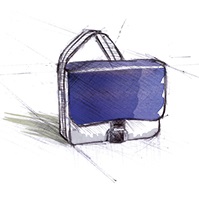 A row of special prerequisites apply for haptic promotional products, which are indispensable if one wants to create a good product. “The thing that differentiates between a promotional product and a retail product is in simple terms the personalisation for the customer,” commented Schnug. “Which is why the diversification through corporate elements of the promoting company in terms of colours, shapes and of course the logo, are extremely important design aspects for this market. However, I don’t believe for instance that writing instruments have to have a clip the size of a plate to make the logo stand out.“ Diversity is called for more than a bill-board approach: “Of course, it is very important to design the products so that the customer logos have the highest possible impact and can be positioned in more than one place,” said Rath. “Most of our models offer several different advertising surfaces and options for different customising techniques.”
A row of special prerequisites apply for haptic promotional products, which are indispensable if one wants to create a good product. “The thing that differentiates between a promotional product and a retail product is in simple terms the personalisation for the customer,” commented Schnug. “Which is why the diversification through corporate elements of the promoting company in terms of colours, shapes and of course the logo, are extremely important design aspects for this market. However, I don’t believe for instance that writing instruments have to have a clip the size of a plate to make the logo stand out.“ Diversity is called for more than a bill-board approach: “Of course, it is very important to design the products so that the customer logos have the highest possible impact and can be positioned in more than one place,” said Rath. “Most of our models offer several different advertising surfaces and options for different customising techniques.”
The second basic prerequisite for promotional products: They have to offer the recipient the highest possible practical value – otherwise, in the worst case they may be disposed of immediately. “We want people to enjoy using our products for a long time,” said van Hellenberg Hubar. “That doesn’t just mean that they should be functional and stable, but also that they should be easily accessible, simple and logically designed and should have a high recognition value. Ergonomic aspects also play a major role.” At the same time however a design shouldn’t be too specific, after all the finished product should suit as many different target groups and fields of application as possible. “You never know who will get your gift in the end,” added Hubar. “Diversity is called for. A product shouldn’t be too strongly aligned to a specific type of taste.”
The implementation
Certain trends and currents from the retail sector do nevertheless have to be taken into consideration – what was en vogue ten years ago, is perhaps already passé today. Rath gave an example: “A few years ago robust, stiff materials were totally in, nowadays lightweight, soft and airy fabrics or material mixes are the rage. The colours and the colour combinations are subject to the prevailing zeitgeist. Overall, however, trends often do involve aspects, which are contradictory to the Halfar® approach: They are often shortlived. For us, trends only become interesting if they are conform with further elements of our design.”
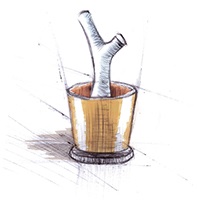 A development that is certainly not shortlived and can thus hardly be ignored is the trend towards sustainability and corporate social responsibility. “From the very beginning we ask ourselves about the lifecycle of a product and how this can be influenced by the selection of the material,” commented van Hellenberg Hubar. “In the meantime, Xindao implements a wide range of ecologically-friendly materials. However, how sustainable a product is depends on its functionality and durability.”
A development that is certainly not shortlived and can thus hardly be ignored is the trend towards sustainability and corporate social responsibility. “From the very beginning we ask ourselves about the lifecycle of a product and how this can be influenced by the selection of the material,” commented van Hellenberg Hubar. “In the meantime, Xindao implements a wide range of ecologically-friendly materials. However, how sustainable a product is depends on its functionality and durability.”
It is thus a naive assumption to reduce the eco-balance of a product down to its material: “It isn’t always economically feasible and reasonable to produce bags completely out of sustainable materials – and a bag that falls apart after only being used for a short while is not really sustainable,” explained Rath. “We refuse to fall below a certain level of quality, relying instead on conscientious product safety tests and controlled production – for example we work together with the Bureau Veritas.“ This is just one of many examples of the balancing act that the promotional products designers have to master on the way to the marketable product. In the end it comes down to a reduction of the complexity as in all design sectors – and in spite of manifold demands, the creation of promotional products also offers plenty of scope for being creative. “Particularly during the design phase we are totally against restrictive thinking. Flexibility and new ideas are the basis for innovative solutions,” stated Rath. “So, I wouldn’t talk about limits. One is called upon to find solutions in an environment with restrictions. Precisely this is what makes our task so exciting.“
The result
That is why those, who ultimately implement the product, always remain under focus – promotional products designers don’t sit in an ivory tower. “We are very honoured if we are awarded design prizes, but that isn’t the goal of our work,” noted Rath. “Design is an important aspect, but the customer purchases the overall package of the Halfar® brand.“ And if that fits the bill, the customers are prepared to pay a little more – because design does have its price of course. “Those people, who are exclusively price-oriented, will always be able to find a cheaper product,” reported van Hellenberg Hubar. “We tell the customer: better buy one good, powerful product than three rubbishy ones.” “I am delighted about every product that is still in my bag, car or flat after a few months,” added Schnug. “Because then the actual aim has been achieved. The customer has built up a relationship to the product and thus also to the promoting brand. And these products are really sustainable.“
The designer Steve Rogers, who actually works in the digital sector, once came up with a phrase that hits the nail on the head for promotional products: “Designing a product is designing a relationship.”


